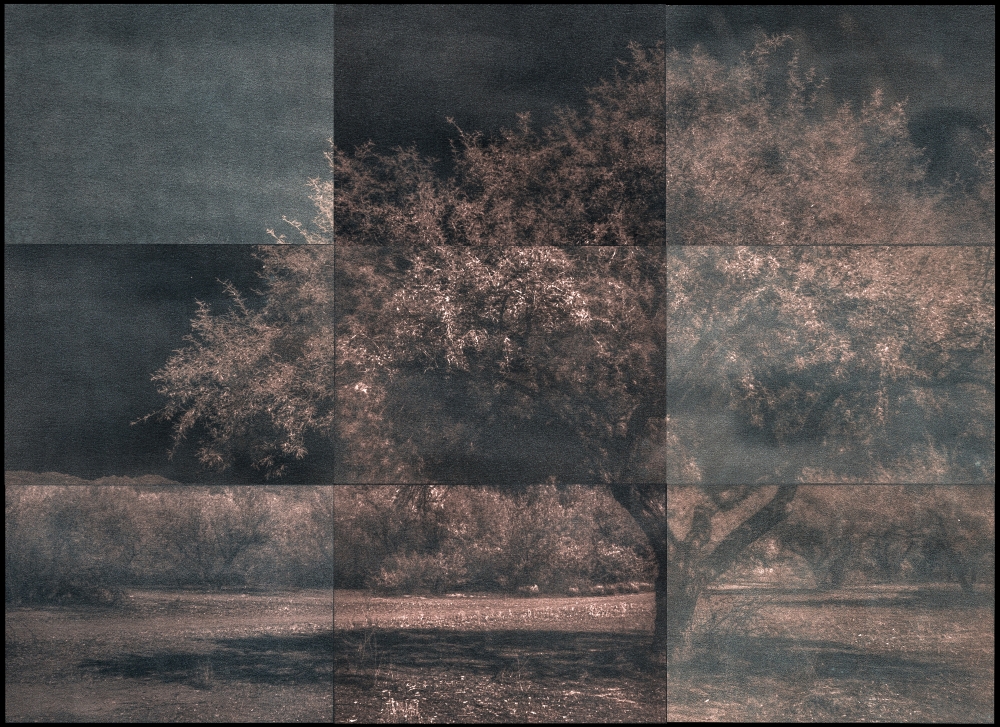IR Cyanotype Photo Mosaic, #1 of 6
A first today! I'm going to give cyanotype mosaic a try...and to make it impossibly complicated...in infrared! It's also the largest piece I've ever made in the darkroom (15'' x 21"), so now we're assured a spectacular failure. Nevertheless, let's have fun trying it. :)
Cyanotype mosaic is a very curious technique. The idea is to take a single image, break it up into smaller images, create cyanotypes of the smaller images, and then reassemble them into a large mosaic. Because every cyanotype is unique, the variations in exposure and tone create a cool patchwork effect that can be really beautiful with the right composition.
For this study, I am creating 6 mosaics, each composed of nine 5" x 7" cyanotypes. The image is a mesquite tree taken in 820nm IR.
IR adds an interesting complication to this study because the tonal curve for creating balanced digital negatives for cyanotype is a little different from the one you would use on a normal black and white photo. But that's why we're here - to play around and see what happens! I used a normal cyanotype curve for Rounds 1 & 3 just to set a baseline (Round 2 will use positives just for comparison), then I'll make adjustments to the negatives in Rounds 4-6 based on how they turn out.
Round 1 Results: Dark and Moody!
A few thoughts:
- I exposed these for 7 min. That was way too long. For Round 3, I'll cut the expsosure time to 2min so the highlights in the IR aren't lost.
- I bleached these as long as I thought I could without losing the midtones. I could probably go a tad longer.
- I think the black tea toner is great. I went a little shorter than usual at 2-5min, but because I didn't take the bleach as far, they ended up dark. I'm okay with that for this round. I think the shorter exposure time is going to make a huge difference.
I actually do like this though. It's got a Pictoriatist vibe about it that I think is pretty cool. I'm calling this a success.
Next: Round 2 will be the same process with positives, just to see how an IR positive cyanotype looks.

